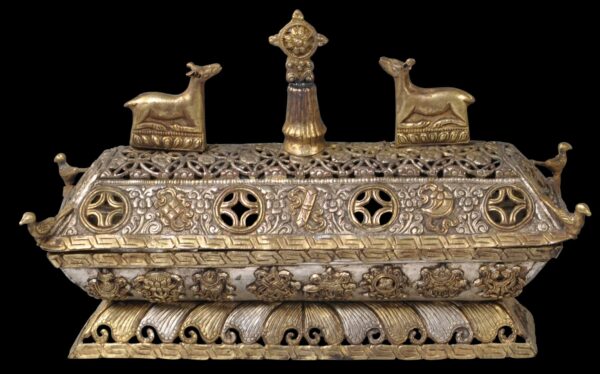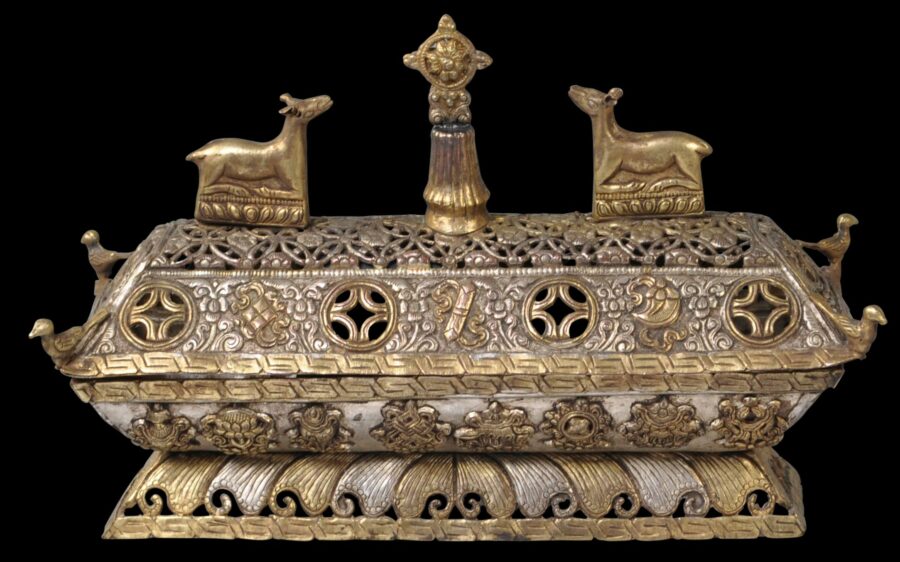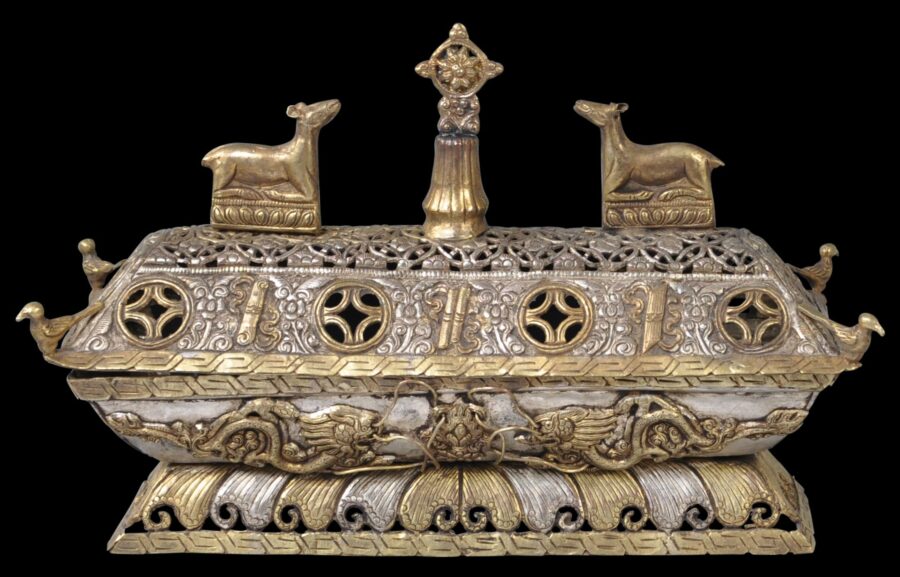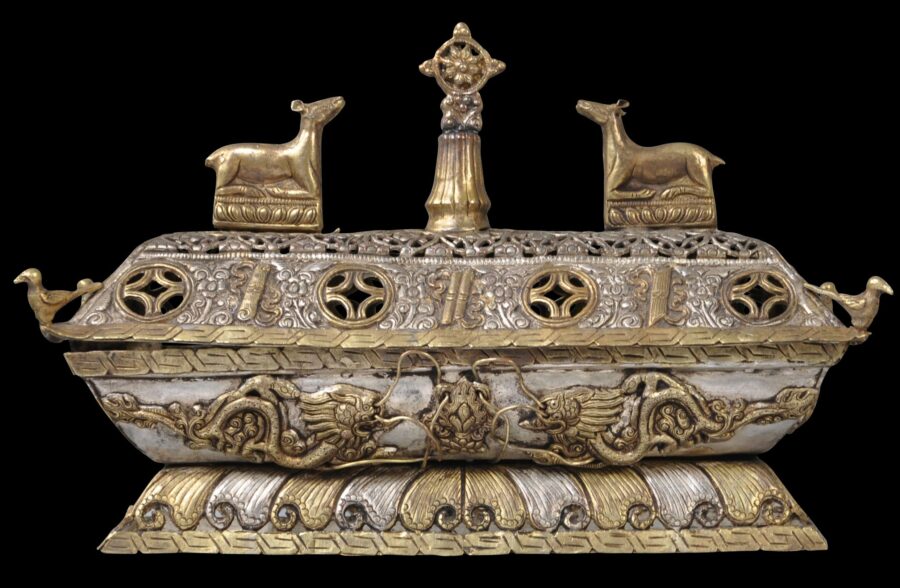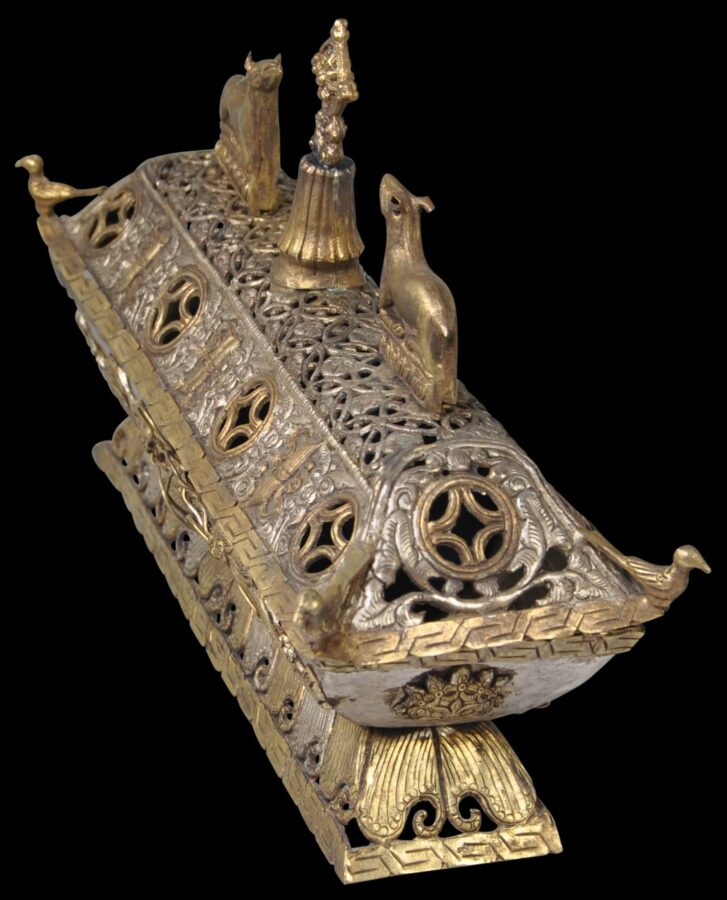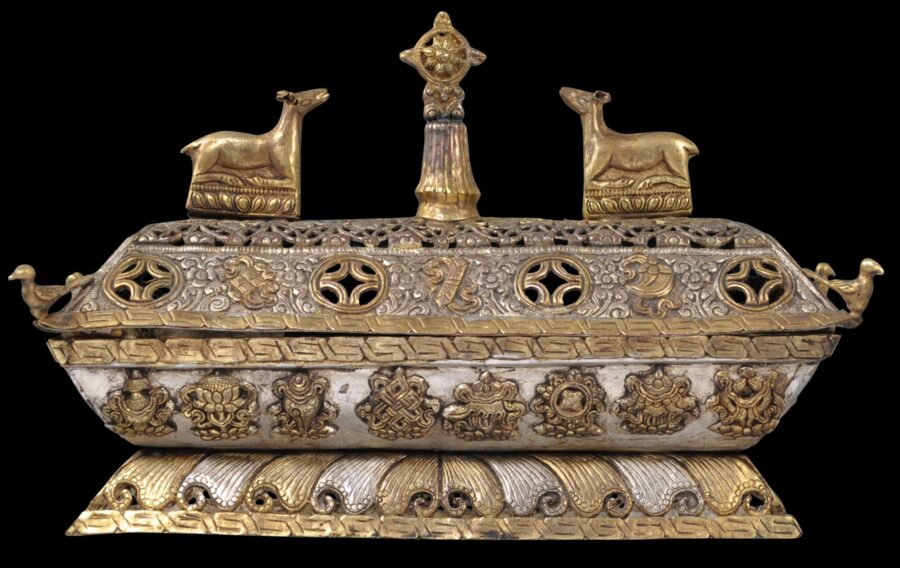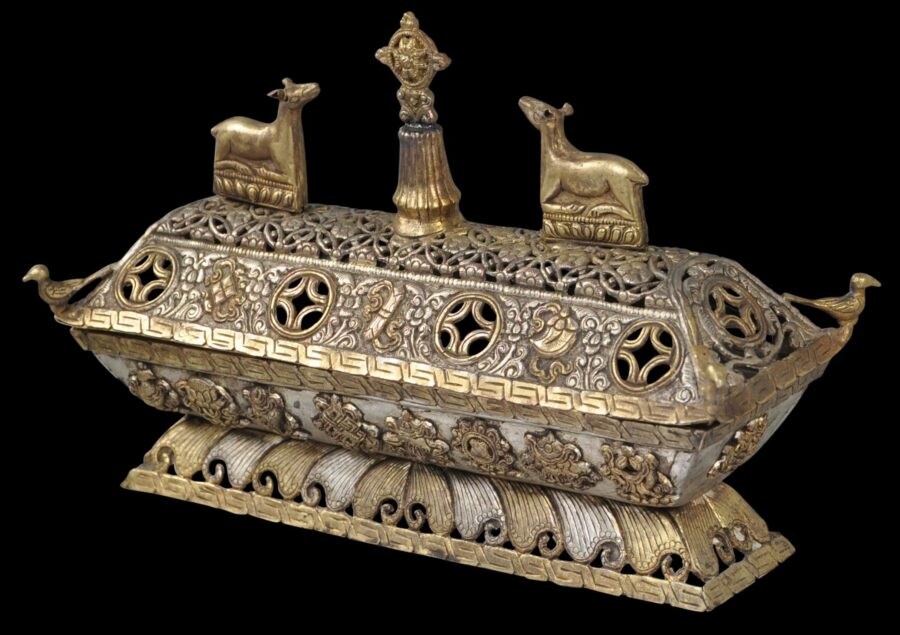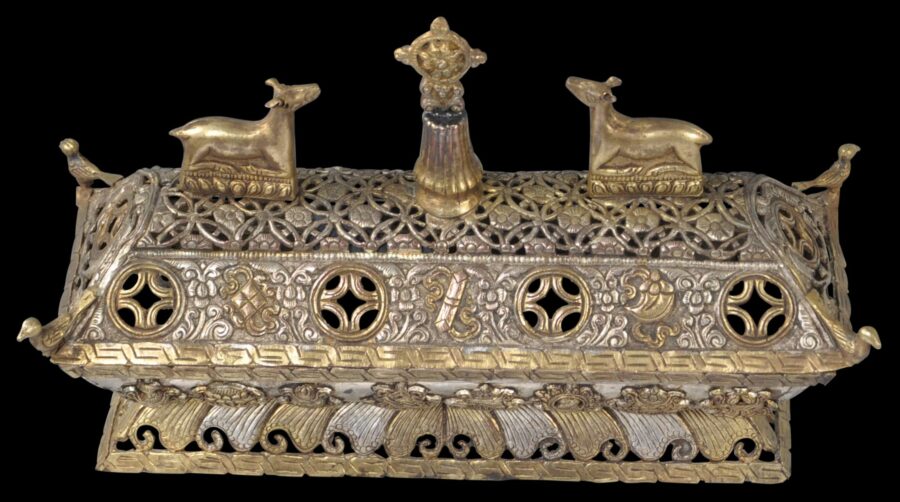This copper incense burner comprises a base and a pierced lid. It has been both silvered and gilded. The cover is surmounted by a pair of attentive deer, with legs folded beneath them, each of which faces a central dharma wheel of the Buddhist Wheel of the Law. The cover has sloping sides and in each corner is an applied, solid-cast and silvered bird. The sides are decorated with pierced Chinese-style cash roundels and chased with symbols of the Daoist immortals.
The base is decorated on one side with a pair of applied dragons with long wire feelers on either side of a vase of wish-fulfilling jewels. On the other side in applied relief are the eight Buddhist symbols of Precious Jewels (Rinchen Bdun) – including the endless knot, the open lotus and the conch shell.
On each end of the base is an applied protective mask – perhaps a Himalayan hybridised Indian kirtimukha mask and a garuda.
The foot of the base is pierced with a scalloped border based on lotus petals over a straight foot rim decorated with a Chinese-style key-fret design which the Tibetans call iChags-ri (or ‘Chinese iron wall)’. This matched the edging of the cover.
The deer are a reference to the Buddha Shakyamuni’s First Sermon in the deer park at Sarnath in what is now southern Nepal, when he first turned the Wheel of the Law. There, surrounded by disciples and deer, the Buddha preached the middle path as the only way to find release from suffering.
The iconography of a pair of deer on either side of the dharma wheel is a decoration found on temple and monastery roofs in Tibet and Mongolia.
A related example in Mongolia’s Gandantegchinlen or Gandan Monastery in Ulaanbaatar, is illustrated in Tsultem (1987, fig. 38). Another similar example in the British Museum is illustrated in Clarke (1992, p. 66).
This incense burner belongs to a group of Sino-Mongolian metalwork items which appear ostensibly Tibetan but which have aspects that are characteristically Mongolian. The scalloped border foot is one such example.
The incense burner is in fine condition and has obvious age.
References
Berger, P., & T. Tse Bartholomew, Mongolia: The Legacy of Chinggis Khan, Thames & Hudson, 1995.
Clarke, J., ‘A group of Sino-Mongolian Metalwork in the Tibetan Style’, Orientations, May 1992.
Henss, M., Buddhist Ritual Art of Tibet: A Handbook on Ceremonial Objects and Ritual Furnishings in the Tibetan Temple, Arnoldsche, 2020.
Tsultem, N., Mongolian Arts and Crafts, State Publishing House, Ulan-Bator, 1987.


